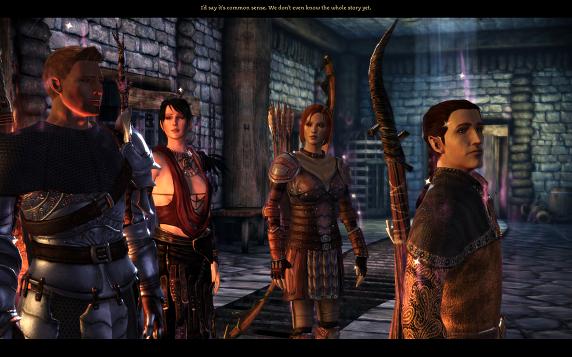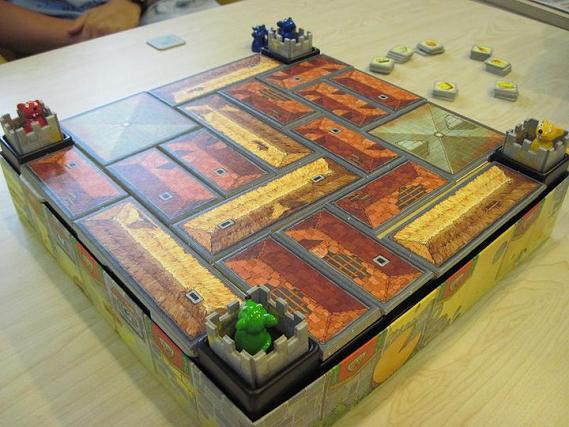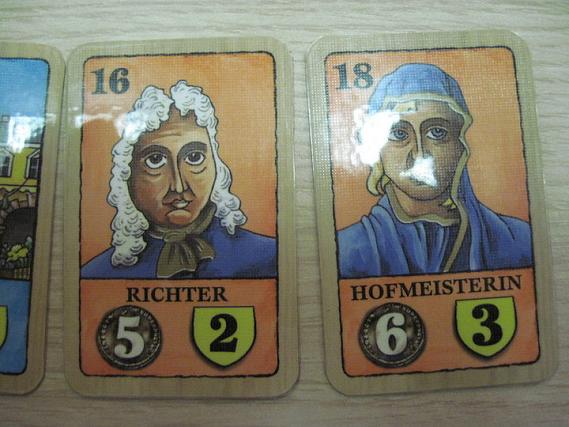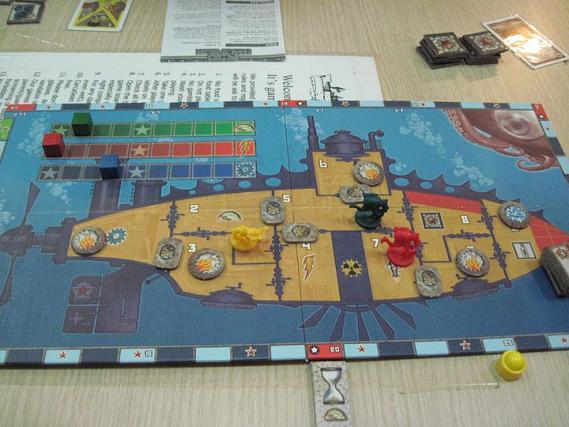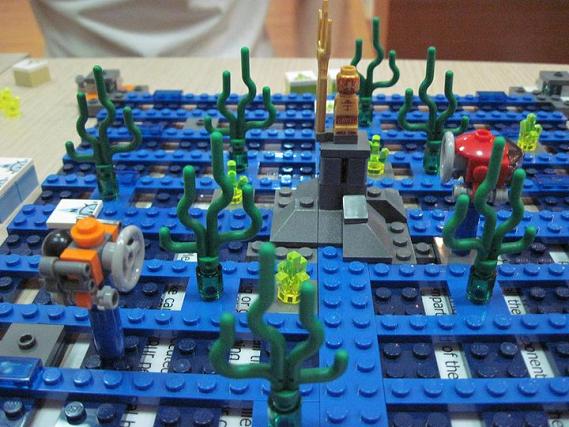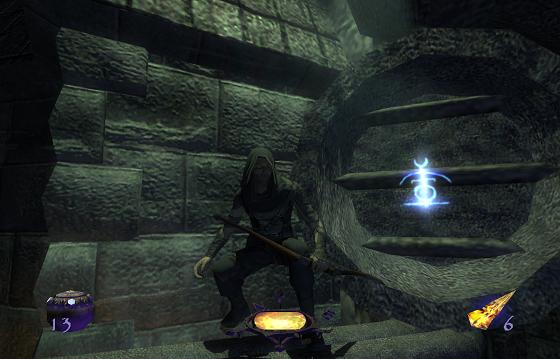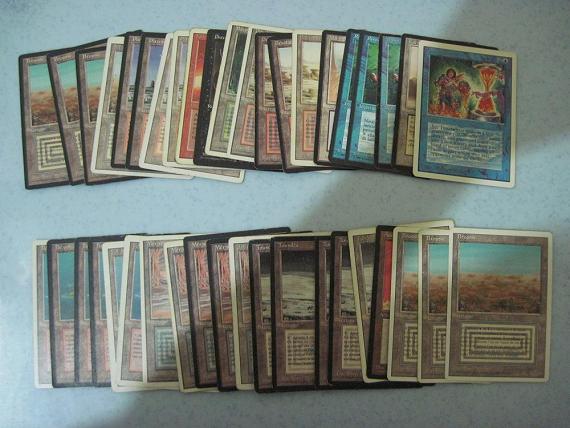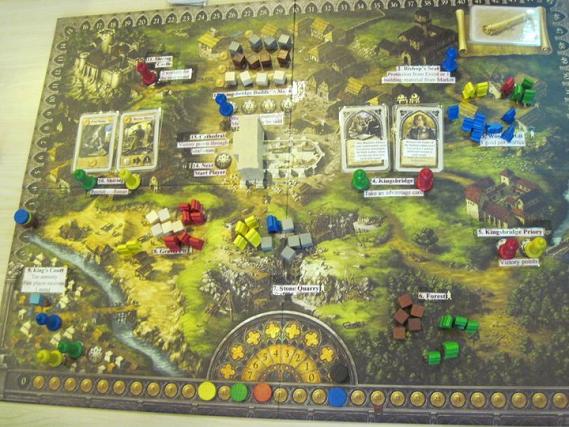
This is one board that can’t be called bland. The colors don’t come across well in a photo however.
I recall Chee Wee often praising the art in this game, and indeed, now that I’ve seen it for myself, I have to agree that it’s one of the best looking games I’ve seen. Michael Menzel’s art has a very earthy quality, with rich colors and tons of detail. It’s a style that’s more often seen in the fantasy genre I think, so it’s very attractive to see it in a Euro game, a genre that seems to either go for generic or cartoonish inoffensiveness.
As Sean observed, I’ve been playing too many games recently to be able to catch up with them in my blog posts, so I’ll have to be brief. Moreover, I think Pillars of the Earth is a bit too complex for me to form a good opinion after just one play, so I think this is one day I should make a note to try again sometime. In the meantime, here are some brief thoughts:
- It’s yet another game about creating a victory point-earning engine with a fixed turn limit. This one is even more naked than the usual ones. You basically convert building resources into points and you do this with the Craftsman cards. Later cards convert resources at a more efficient rate than earlier ones, so you have an incentive to upgrade them.
- However, you only have a limited number of spots for these craftsmen and discarding the basic ones takes some options away from you, so you don’t want to do this casually but must instead take care to ensure that your chosen strategy isn’t going to require these options. It’s an intriguing mechanic.
- There’s a worker placement mechanic in this one is more muted but it’s also arguably the biggest source of randomness in the game. It’s more muted in the sense that getting precisely what you want isn’t as important as in, say, Agricola or Caylus. There are enough alternatives that second choices aren’t too bad either and no one can really lock anyone out of anything. But it’s still important that missing out on good opportunities will add up and cost you the game. I guess the bit of randomness adds tension and excitement but I still prefer less randomness in my euros, thanks very much.
- The most eye-grabbing part of the board is of course, the wooden cathedral pieces in the middle. As in Tutankhamen, it’s ostentatious without being strictly necessary as it serves only to record what turn it is. I guess having nice wooden blocks to play with is still better than a cardboard pyramid.
- Having everyone’s money being represented as another track on the board was neat. It eliminates another bulky component from the game and lets everyone see how much money each player has in one glance. I can’t recall offhand if I’ve seen any other games do this. The difficulty of course is that some players may accumulate too much cash for the track to accommodate, so it’s only useful for games in which players’ money is within a predictably constrained band.
- Thematically, I dislike that the game is a fixed six turns. The cathedral will be built in six turns no matter what you do! I’d have preferred something like Caylus in which the length of the game in directly controlled by the players or include some way to penalize the players if they’re slow. That would seem to be more in keeping with the spirit of the original story.
Overall, I’m inclined to put this into the average category. I suppose that the greater luck factor might make it more palatable to more casual gamers who don’t want everything to be perfectly computable but apart from the art, there’s nothing here that particularly impresses me. And frankly, it doesn’t even sell me on watching the series or reading the book. The trials and tribulations of building a cathedral? Thanks but no thanks.
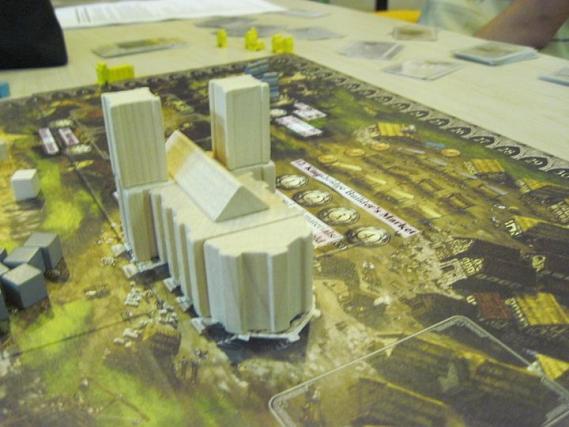
The cathedral finished at last! Now someone just needs to paint it.
